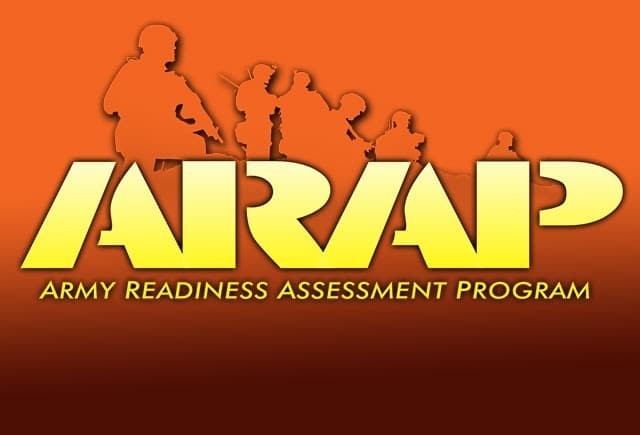The Army Readiness Assessment Program (ARAP) is a tool designed to assess the overall Readiness of Army units. The program provides commanders with data and insights into the unit’s readiness status and identifies potential areas for improvement.
ARAP is a web-based tool that allows commanders to track and monitor the Readiness of their units in real time. The tool provides a dashboard that displays key readiness indicators such as personnel readiness, equipment readiness, and training readiness.
The program is designed to be user-friendly, and commanders can easily access the information they need to make informed decisions about their unit’s Readiness. The tool provides a standardized approach to readiness assessment, which ensures that all units are evaluated using the same criteria.
The ARAP assessment process consists of three main phases:
- Planning: During this phase, commanders develop an assessment plan that outlines the scope and objectives of the assessment.
- Execution: This phase involves collecting and analyzing data to evaluate the unit’s readiness status.
- Reporting: During this phase, commanders receive a report that summarizes the results of the assessment and provides recommendations for improvement.
The ARAP program is an essential tool for ensuring that Army units are ready to meet the demands of their mission. By providing commanders with real-time data and insights, the program enables them to make informed decisions about how to improve their unit’s Readiness and overall performance.

What is Military Readiness?
Military Readiness refers to the ability of a military force to carry out its assigned missions effectively and efficiently. It encompasses a broad range of factors, including personnel readiness, equipment readiness, training readiness, and operational Readiness.
Personnel readiness involves ensuring that the military force has the necessary personnel with the appropriate skills, training, and experience to perform their assigned duties. This includes recruiting and retaining qualified personnel, providing them with appropriate training and education, and ensuring they are physically and mentally prepared for their roles.
Equipment readiness involves ensuring that the military force has access to the necessary equipment, including weapons, vehicles, and other hardware, and that the equipment is maintained and operational.
Training readiness involves ensuring the military force has the necessary training to perform their duties effectively and safely. This includes individual training as well as unit-level training, which prepares soldiers for their specific roles within the larger military force.
Operational Readiness involves ensuring that the military force is prepared to carry out its assigned missions at any time. This includes being able to rapidly deploy to any location and being able to operate in a variety of environments and conditions.
Military Readiness is critical to ensuring that a military force can effectively respond to threats and carry out its assigned missions. It requires a continuous effort to maintain and improve all aspects of the military force, including personnel, equipment, training, and operations.

The Importance of Military Readiness
Military Readiness is of utmost importance to ensure that a military force is prepared to carry out its assigned missions effectively and efficiently. There are several reasons why military Readiness is critical:
- National Security: The primary purpose of a military force is to protect the nation’s security. A military force that is not adequately prepared to carry out its missions could jeopardize national security and put the lives of its citizens at risk.
- Rapid Response: Military Readiness enables a military force to respond to any crisis or threat rapidly. This could include responding to natural disasters, terrorist attacks, or military conflicts. A military force not ready to respond quickly could miss critical opportunities to protect the nation’s security or assist those in need.
- Deterrence: A strong military force that is well-prepared can act as a deterrent to potential adversaries. The perception that a military force is capable and prepared to carry out its missions can discourage potential adversaries from taking aggressive actions that could lead to conflict.
- Operational Effectiveness: A well-prepared military force is more likely to be effective in carrying out its missions. This includes operating in various environments and conditions, adapting to changing circumstances, and achieving mission objectives.
- Cost Savings: Investing in military Readiness can ultimately save money by reducing the likelihood of costly conflicts and the need for additional resources to respond to crises.

4 Pillars of Army Readiness
The U.S. Army has identified four pillars of Readiness that are critical to ensuring that the Army is prepared to carry out its missions effectively and efficiently. These four pillars of Army readiness are:
- Personnel Readiness: This pillar focuses on the Army’s personnel, including its soldiers and civilian employees. Personnel readiness involves ensuring that the Army has the right number of personnel with the appropriate skills, training, and experience to perform their assigned duties. It also involves ensuring that personnel is physically and mentally prepared for their roles.
- Equipment Readiness: This pillar focuses on the Army’s equipment, including weapons, vehicles, and other hardware. Equipment readiness involves ensuring that the Army has access to the necessary equipment and is properly maintained and operational.
- Training Readiness: This pillar focuses on the Army’s individual and unit-level training programs. Training readiness involves ensuring that soldiers and units are properly trained to perform their duties effectively and safely.
- Leader Development Readiness: This pillar focuses on the development of the Army’s leaders, including its officers, noncommissioned officers, and civilian leaders. Leader development readiness ensures that leaders are properly trained and prepared to lead soldiers and units effectively.
